Foresight review
Do you still remember that in the previous tour of the cosmetics kingdom in this series, Xiao Bian made a summary of the development history and basic knowledge of cosmetics, as well as the regulatory regulations of the cosmetics industry, as well as in the cosmetics research and development laboratory. Common equipment has been comprehensively and meticulously combed. In fact, in the five major types of laboratory instruments, the related equipment for material composition analysis and general physical parameter measurement plays a leading role in cosmetics research and development and quality inspection, which directly affects the subsequent experimental operations and production steps, and the pH and Conductivity measurement is the basis of the foundation. So today we will talk about the cosmetics pH.
How much do you know about cosmetic pH?
A. pH that is closely related to us
When it comes to pH, it's no stranger to someone with a little common sense. We have learned in junior high school chemistry, pH is a measure of the acidity and alkalinity of the solution, 7 is neutral, less than 7 is acidic, more than 7 is alkaline, and we have also learned, pH can pass litmus, methyl orange, phenolphthalein The pH indicator and the pH test paper were measured. I believe that this learning experience in middle school has made us full of curiosity and curiosity about this interesting subject of chemistry. However, these are only the simplest qualitative determinations, that is, the colorimetric method. Although simple and easy to perform, the method is not accurate and is not suitable for the determination of turbid, colored samples. In comparison, quantitative determination is much more accurate. It requires a potentiometric method (acid meter method), which is usually the easiest, practical and accurate method.
pH is the negative logarithm of the hydrogen ion concentration in the solution. The formula is expressed as:
pH=-lg[H + ]
In the cosmetics industry, pH is an important quality indicator. If the pH is too high or too low, it will not only affect the normal function of the cosmetic, but also irritate the skin, causing irritating dermatitis, rash, hair damage, etc., directly causing damage to the body. As a routine testing item for cosmetics, pH measurement can evaluate and review the quality of cosmetics companies and monitor the quality changes and safety of commercially available products.
For cosmetics that are in contact with us in the widest range of skin and hair, pH is almost a decisive indicator. Human skin is not neutral, but rather slightly acidic. Although the appearance of human skin varies, the pH of the skin generally falls within the range of 4.5 to 6.5. This is because the skin surface is secreted with sebum and sweat, and its main components contain lactic acid, uric acid, fatty acids, etc., so our skin under normal conditions has a weak acidity. For this reason, the cream emulsion cosmetics for skin have different pHs to meet the physiological needs of human beings.
Human hair is a protein structure with a pH of about 6.0. A strong acid or alkaline solution can react to it. Especially when it is exposed to alkaline substances, it is prone to deterioration and embrittlement. Must be slightly acidic or neutral.
B. Cosmetic pH regulations
The national standard has clear regulations on the pH of cosmetics. The main regulations include the "Measurement of the pH of the general test method for cosmetics", the "Measurement potential method for the pH of the aqueous solution of surfactant" and the regulations on pH indicators in various cosmetic product standards. It is a specification form for common cosmetic pH:
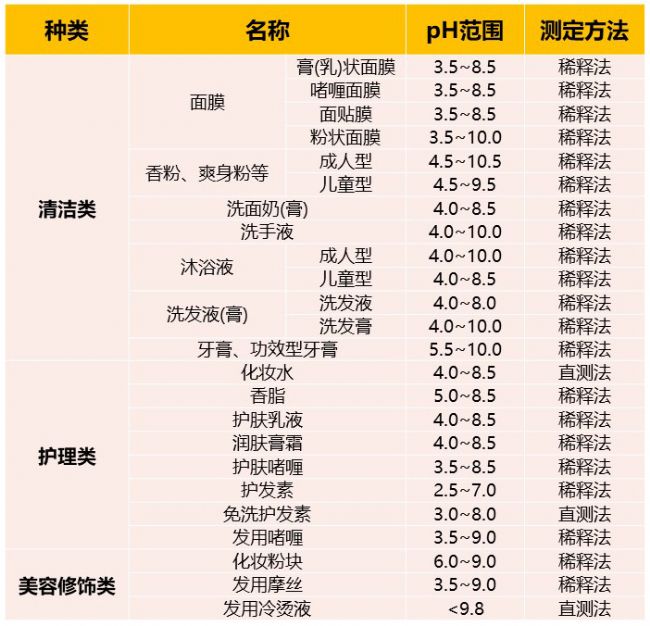
C. Exploring interesting pH meters
For the staff who often play with bottles and jars in the lab, the pH meter is almost a common thing. Just put the electrode in the sample solution and you will see the exact on the display soon. Measurement results! But do you know the principle of measuring the pH of this small pH meter?
A pH meter, also called a pH meter, measures not only the pH of a solution, but also the electromotive force of a battery. The core part is the electrode, which is mainly composed of a reference electrode (cabbage electrode or silver-silver chloride electrode), a measuring electrode (glass electrode) and a precision potentiometer. Currently, pH meters on the market usually use glass electrodes and A molded-shell rechargeable composite electrode in which the reference electrodes are combined.
When the electrode is inserted into the solution to be tested, the glass electrode serves as an H + activity indicating electrode in the solution, and the reference electrode constitutes a primary battery. When the H + activity of the solution at both ends of the glass film of the glass electrode is different, a membrane potential is generated, so that the electromotive force between the glass electrode and the reference electrode changes with the change of the H + activity.
According to the Nernst equation, at 25 ° C there are:
E=φ parameter - φ glass = K+0.0591pH (25°C)
It can be concluded from the above formula that the electromotive force E of the battery is linear with the pH of the solution to be tested. At the same time, K in the formula is an unfixed constant, so it is generally corrected on a pH meter using a standard buffer solution of known pH.
Calibration of the pH meter typically employs two to three point calibrations, ie, calibration with two or three standard buffer solutions of known pH. Standard buffer solutions are usually divided into three types: pH 4.00, pH 7.00, and pH 9.21. The pH meter is first positioned with a pH 7 standard buffer solution, and a second standard buffer solution (pH 4 for acidity and pH 9 for alkaline) is selected according to the acidity and alkalinity of the solution.
It is worth noting that before the calibration, special attention should be paid to the temperature of the solution to be tested in order to properly select the standard buffer solution. Because the pH of the standard buffer solution is different at different temperatures.
Ohaus pH Meter - Walking Cosmetics Lab
As mentioned above, cosmetic pH as a vital physical parameter indicator, in a sense, is a benchmark for results testing of cosmetics development and quality inspection. Ohaus's vast water analysis products kingdom is doing its best to meet your various measurement needs in different occasions, the most representative of which is the pH meter family – from accurate and efficient benchtop meters to convenient portable meters And then to the small and exquisite test pen, whether in the product development laboratory, outdoor, or in your home's dressing table and washroom, you only need to flexibly choose the right size and model equipment according to the specific occasion, you can fully satisfy your needs. Cosmetic experiment needs!
Let's take a look at the representative people in our pH meter family:
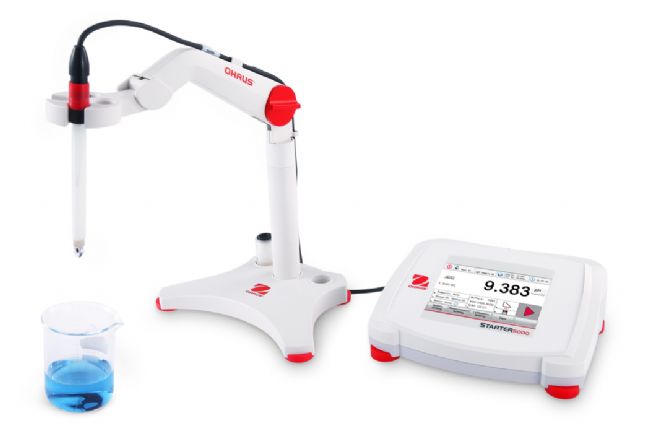
The ace of the pH meter family - ST5000
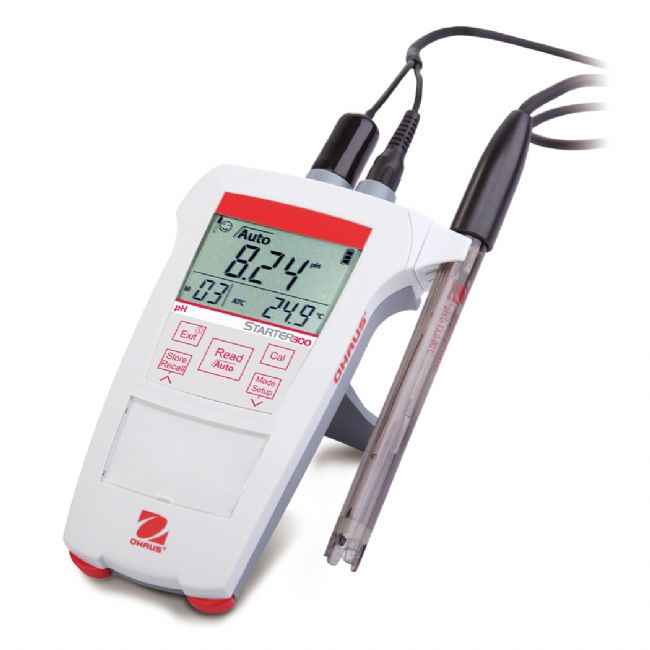
The king of portable instruments that combines flexibility and precision - ST300
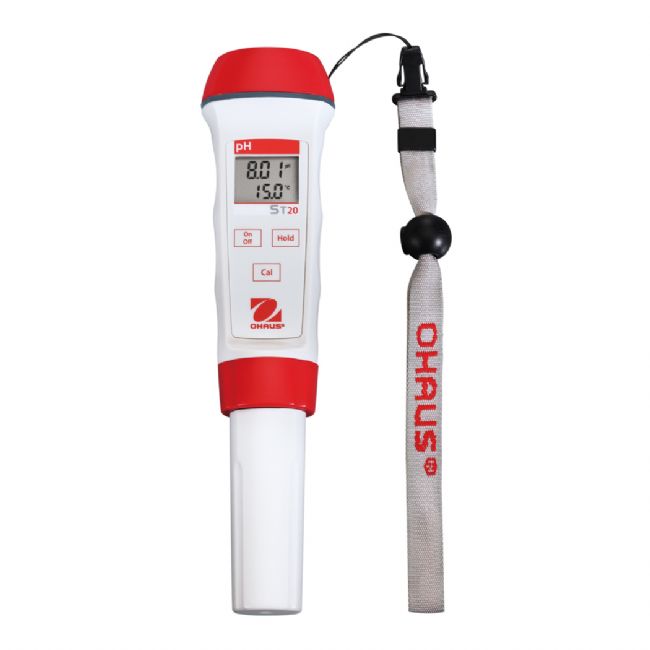
Agile little brother - ST20
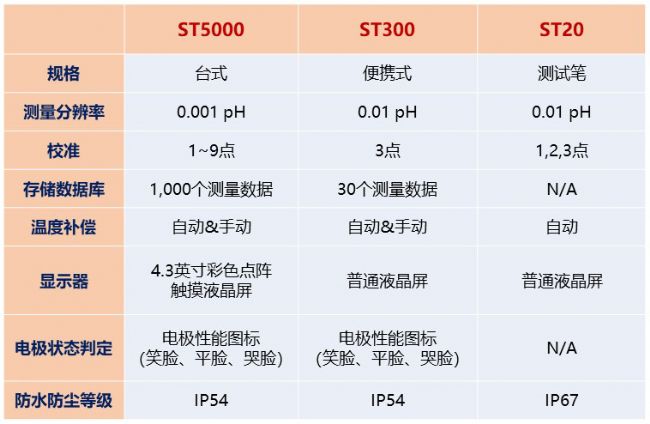
Detailed comparison of the representatives
No matter which form of cosmetics, the Ohaus pH meter family can bring a wonderful mobile laboratory to your side, allowing you to complete pH measurement anytime, anywhere!
If you have more questions about pH measurement, or are considering adding and replacing a new pH meter for your lab, please call 4008-217-188 or click on "Request Information" and leave relevant information Our professional team of engineers will contact you quickly. Finally, Xiao Bian on behalf of all the Ohaus all the friends in advance wish all the mothers happy holidays!
Uterine Manipulator,Gynecology Cup-Type Uterine,Multifunction Uterine Manipulator,Cup Uterine Manipulator
ZHEJIANG SHENDASIAO MEDICAL INSTRUMENT CO.,LTD. , https://www.sdsmedtools.com